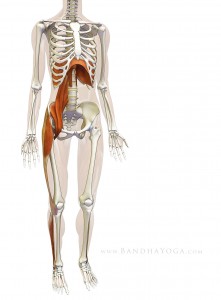A healthy spine is the key to a vibrant life. Yogis, Osteopaths, Chiropractors, and many doctors agree that you are as young as your spine is flexible. Unfortunately, back pain has become an epidemic in our culture. This is mainly due to poor posture, weak back musculature, and limited movement in the spine. The spine has a few critical functions. First, it is your central column of support. It stabilizes your body and holds you up against gravity. Building strength in the muscles that sleeve your spine is important to support good posture, keep you powerful during life’s activities, and prevent injury. Your spine also houses your spinal cord. Think of it this way – your brain is not just in your head. You have so much brain that it flows all the way down your spine. Nerve endings exit from every one of your spinal bones called vertebras. This […]
Continue ReadingAlignment Tips
Get To Know Your Diaphragm
Modern life seems to move more quickly than our biology can handle. Between media, traffic, and the pressures of work and life responsibilities, most of us spend a lot of time in ‘fight or flight’ stress response. This activates your sympathetic nervous system which dumps adrenaline into your blood stream. The result inhibits cortisol production, weakens the immune system, and sets the body up for dis-ease. Argh, I am getting stressed out just thinking about it! Take a deep breath into your belly… exhale… ahhh, that’s better! Belly breathing activates the parasympathetic nervous system which is sedating and calming. It releases growth hormone to repair injured tissue, regulates cortisol, and brings the body back to a balanced and soothed state. Breathing is an unconscious process. Many of us breathe in a stress response pattern that eliminates the belly and diaphragm. This shallow breathing pattern which recruits the chest and upper shoulder muscles: (pectoralis minor, […]
Continue ReadingHappy Feet
Many of the discomforts in our body begin with our feet. As you walk, your foot, which could be thought of as a sense organ, finds the ground and sends messages to the rest of the body how to support your movement. This function is limited because we put our feet in shoes and walk along paved streets when our bodies were built to run barefoot on the earth. Whether or not you have foot pain, fallen arches, bunions, toes that don’t spread, or you wear high heel shoes, this one simple exercise will help you open and increase blood flow in your foot, loosen tight calves and hamstrings, and allow your foot to ground more completely. What To Do: 1. Get yourself a “pinky ball.” 2. Step down on it with your heel, slowly move the ball 1/4 inch at a time toward your toes. Stay 30 seconds in each spot. 3. You […]
Continue ReadingWrist Relief
Nothing upsets me more than seeing and hearing negative posts about yoga in the media. It is frustrating to me because pain and injury in yoga can completely be avoided if you know what you are doing. That said, you need to go to take the time to learn about your body and choose teachers who educate you about how to do the postures and take care of yourself. As a yogi it is up to you to take responsibility for your body and your practice. Together let’s keep yoga’s reputation intact. Wrist pain is one of the common complaints in yoga classes. Here’s how you can avoid it. 1. Place the foundation of your hands clearly and stay rooted through the finger prints, the knuckles – especially the index knuckle, and keep a lift in the center of the palm. Avoid collapsing into the heels of your hands. 2. Practice working […]
Continue Reading


